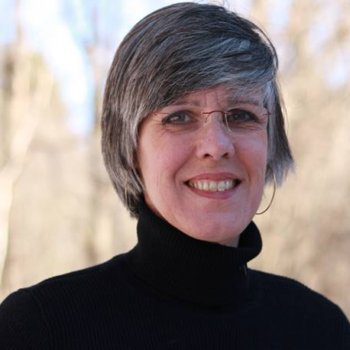Maine has more jobs than it can fill, and that situation is only predicted to get worse. As a result, attitudes about the role of immigrants in the state’s workforce are shifting. The debate over integrating people from other countries into Maine jobs – once framed as a social justice issue (doing the right thing) – is now centered on how this population can help support economic development (doing a necessary thing).
In response to the employment gap, Maine legislators have crafted bills aimed at easing obstacles that hinder immigrants from entering the workforce. These efforts are being supported by businesses, immigrant advocates, chambers of commerce and some politicians. In general, efforts to increase support for immigrant workers are originating from the Democratic side of the aisle, while some Republicans are wary of support because of budget concerns. However, there has been some Republican support, notably by Roger Katz, a former state Republican senator from Augusta.
“What has changed (about the immigration issue) is that as our workforce challenges have grown – you are hearing an outcry from the business community,” says Katz. “Because we need more workers, the voices in the Maine Legislature have changed from the usual social justice advocates. They are now being joined by chambers of commerce and business men and women from around the state. That’s starting to really shift the attitude.”
Last year, Katz sponsored LD 1492, an Act to Attract, Educate and Retain New Mainers to Strengthen the Workforce, that received some bipartisan support before failing to be funded. The bill in its original form would have established a state office for “new Mainers” to carry “out responsibilities of the State relating to immigrants in and into the State.”
The bill also would have funded a second immigrant welcome center for the state, located in Lewiston and modeled on Portland’s New Mainers Resource Center, which receives $75,000 a year in state funding. Katz’s bill included funding for vocational and workforce training and English-language training, too. All told, the projected 2018-19 costs were $825,000. The new state office proposal didn’t survive the committee, and the stripped-down bill was projected to cost $390,000.
At the start of the current session and under a more immigrant-friendly gubernatorial administration, legislators again offered up bills aimed at immigrants and the workforce, including:
An Act to Attract, Educate and Retain New State Residents to Strengthen the Workforce (LD 647), which resurrects some aspects of Katz’s bill, including adding a welcome center in Lewiston. The new bill, sponsored by Rep. Kristen Cloutier (D-Lewiston), also would double funding for Portland’s center to $150,000 a year. Lewiston would be funded at the same level. The bill supports expanded English-language instruction, vocation-specific language instruction and community planning programs dedicated to integrating immigrants in communities and the workforce. The costs associated with the bill are $1.5 million a year. The bill is in process, with public hearings and work sessions not yet scheduled. Cloutier is optimistic about the bill moving forward but realistic about budget constraints:“There has been a lot of interest in the bill, and representatives from organizations in Lewiston and other stakeholders have met with staff in both the Department of Education and the Governor’s office. Because of the fiscal note, it is hard to know where this will land, but we are hopeful. As I am sure you know, there isn’t much funding left on the table after covering the Governor’s budget priorities. My guess is that it will make it successfully out of committee and probably pass in both the House and Senate. What happens at the appropriations table remains to be seen.”
A directive for licensing boards “To Study the Barriers to Obtaining Professional Licensure and Certification (LD 532), directing professional licensing and certification boards to study barriers to obtaining licenses and certification. This bill, from Rep. Victoria Morales (D-South Portland), focuses on credentialing at the professional board level. It would require that professional boards “find out what the hurdles are and to work to remove unnecessary burdens and to ease licensing while keeping the standards,” says Morales. The boards would report their findings to the Legislature’s Joint Standing Committee on Innovation, Development, Economic Advancement and Business, which would then suggest changes to licensing and certification boards. The bill (which received support from the Maine Business Immigration Coalition, Portland’s New Mainers Resource Center, Educate Maine, and the Maine Heritage Policy Center) is currently tabled by the Innovation, Development, Economic Advancement and Business Committee.
LD 1107, a workforce development bill that would have required a $5 million appropriation, died in committee earlier this year because “the Department of Labor wanted more time to examine the proposal because it involved working with other agencies,” says its sponsor, Rep. Michael Brennan (D-Portland). The bill would have created a workforce development council within the Maine Department of Labor and provided help for immigrants with language and job training, credentialing, transportation and housing. “We need to move the discussion from the general assistance perspective to workforce integration,” says Brennan about the legislation, adding that he’s pleased that the Department of Labor has agreed to form a study group that will draft recommendations for the next legislative session.

Paying for these measures raises concerns
Opponents to these efforts focus on cost.
While he found parts of Katz’s 2018 bill attractive and originally co-sponsored it, Rep. Harold “Trey” Stewart III (R-Presque Isle), says he was concerned about its scope and costs.
“As was initially explained to me, LD 1492 was about building a stronger workforce for Maine, a need which exists in almost every corner of our state,” says Stewart, assistant minority leader. “As a representative from Aroostook County, the oldest county in the oldest state in the country, that’s certainly true up here. I initially liked the premise behind 1492 as a way to provide greater (English as a Second Language) support for immigrant populations across the state as a way to get them into the workforce faster and be more self-sufficient. In my neck of the woods, this would be the case of Franco-Americans in The County, particularly in the Valley area.”
But, in the end, Stewart voted against the bill because: “As with most bills, there were many components of the bill, some I agreed with and others I didn’t think were necessary and shouldn’t be prioritized by the state.”
Looking at proposals in the current session, Stewart is staying focused on costs.
“I am concerned that the sheer volume of new spending proposals – over 2,000 bills proposed in the first session – will create issues when it comes time to set new priorities. In short, if everything’s a priority, nothing’s a priority,” he says. “For example, Medicaid expansion for able-bodied, childless adults will mean less available funding for other initiatives, such as workforce development and other pressing needs we’re facing as a state. If the governor and her party don’t want to raise taxes and make Maine even less competitive nationwide, they will have to be setting some hard priorities and sticking with them in the coming session in order to achieve that mark.”

Rep. Heidi Sampson (R-Alfred), who served with Stewart on the Education and Cultural Affairs Committee that considered LD 1492, was most concerned with cost and approach. She favors focusing on boosting existing programs rather than on new organizations.
“The bill you are talking about was almost a million dollars,” she says. “So yes, financially that’s a big heavy lift. But in all reality, my concerns are why are we expanding? Why do we have to create an entire new infrastructure when we already have existing organizations that are already tailored for this purpose. For example, in adult ed, you have English as a second language. They have workforce counselors who help them get the skills they need to get jobs, and you have help with placement. So why would we have to create this entire infrastructure? That bill was talking about almost an entire level of bureaucracy, with a member on the cabinet. It was layers and layers of things that were not necessary.”
The most outspoken critic of efforts to integrate immigrants into Maine’s workforce has been Rep. Lawrence Lockman (R-Amherst).
In discussing Katz’s bill, Lockman writes in response to emailed questions: “Referring to immigration as a ‘social justice issue,’ (Katz’s) proposed solution is to encourage immigration of non-white foreigners who don’t speak English and have higher birth rates than Mainers. Count me as skeptical of the notion that state government should be involved in pushing to transform the demographic profile of the state. Maine’s racial and ethnic composition is none of Senator Katz’ business, and certainly none of Augusta’s business. We have a hard enough time as it is doing the job we were hired to do: balancing the state budget and paying our bills on time.”
Lockman took issue with the efficacy of spending money on language instruction: “LD 1492 focused almost exclusively on teaching foreign-born immigrants how to speak English, at a time when Maine taxpayers are already footing the bill for more than $19 million a year for ESL (English as a second language) instruction, an increase of more than 100 percent in just 10 years.”
In considering pro-immigrant workforce legislation in general, Lockman writes: “If we’re going to give preference to any group or class of people as potential ‘new Mainers’ – the explicit objective of LD 1492 and its offspring – it only makes sense that we prioritize people from other states who are U.S. citizens and speak English, without regard to skin color or ethnicity.”
What’s next?
Brennan, who has worked on legislation that would help immigrants enter the workplace, calls the debate about helping people an old one: “Who is needy and who isn’t and what is the cost to the general public … That’s a debate we’ve had in this country for a couple of hundred years. My perspective is that we can’t afford not to help these people if we want to have a workforce and for us to thrive and be a prosperous community.”
And Katz acknowledges the discomfort surrounding change for some opponents.
“The impediment has been a natural fear of those who look and sound differently from us fueled by nationalistic rhetoric from both our (former) governor and recently our president,” he says. “That has worked against our own self-interest in a pretty profound way.”
For Katz, it’s about attracting as many people to Maine as possible.
“The biggest thing we can do is figure out how to make Maine a more welcoming location for people who have the American dream and want to come here, whether they are from Ohio or Nevada or Syria or Burundi,” he says. “It’s about how can we make Maine the most welcoming state in the country to motivate people for wherever they are coming from. We are talking about legal immigrants here. We are not talking about a policy of attracting illegals to the state of Maine. That’s a bogeyman that’s been created, which isn’t so. It’s not a problem in this state. We are talking about refugees, and asylum seekers and others who have legal status here.”
One of those is Arsene Sebaziga, an asylee from Democratic Republic of Congo who found work at the Maine Department of Transportation after getting help via existing services in Maine with English skills, credentialing, and job preparation. One of his brothers is a pharmacist, and another is a U.S. Marine.
Sebaziga has advice for employers who are considering hiring immigrants: “Don’t think just because someone is an immigrant that he’s not qualified. Give him a chance. And I’m sure they will find a lot of talented people from immigrant communities. There are a lot who don’t have an opportunity who don’t have the chance to show their talents.”




